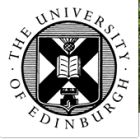Communication
Communication (from Latin commūnicāre, meaning "to share") is the act of conveying intended meanings from one entity or group to another through the use of mutually understood signs and semiotic rules.
Engagement
An engagement, betrothal, or fiancer is a promise to wed, and also the period of time between a marriage proposal and a marriage. During this period, a couple is said to be betrothed, intended, affianced, engaged to be married, or simply engaged. Future brides and grooms may be called the betrothed, a wife-to-be or husband-to-be, fiancée or fiancé (from the French word of the same form), respectively. The duration of the courtship varies vastly, and is largely dependent on cultural norms or upon the agreement of the parties involved.
Public
In public relations and communication science, publics are groups of individual people, and the public (a.k.a. the general public) is the totality of such groupings. This is a different concept to the sociological concept of the Öffentlichkeit or public sphere. The concept of a public has also been defined in political science, psychology, marketing, and advertising. In public relations and communication science, it is one of the more ambiguous concepts in the field. Although it has definitions in the theory of the field that have been formulated from the early 20th century onwards, it has suffered in more recent years from being blurred, as a result of conflation of the idea of a public with the notions of audience, market segment, community, constituency, and stakeholder.
Science
Science (from Latin scientia, meaning "knowledge") is a systematic enterprise that builds and organizes knowledge in the form of testable explanations and predictions about the universe.
Science Communication
Science communication is the public communication of science-related topics to non-experts. This often involves professional scientists (called "outreach" or "popularization"), but has also evolved into a professional field in its own right. It includes science exhibitions, journalism, policy or media production. Science communication also includes communication between scientists (for instance through scientific journals), as well as between scientists and non-scientists (especially during public controversies over science and in citizen science initiatives).
Science
Take a look at George Gamow, who is now recognized as one of the great cosmologists of the last hundred years. I speculate that he probably didn't win the Nobel Prize because people could not take him seriously. He wrote children's books. His colleagues have publicly stated his writing children's books on science had an adverse effect on his scientific reputation, and people could not take him seriously when he and his colleagues proposed that there should be a cosmic background radiation, which we now know to be one of the greatest discoveries of 20th-century physics.
Michio Kaku, in "Borrowed Time: Interview with Michio Kaku".
Science
Today, when so much depends on our informed action, we as voters and taxpayers can no longer afford to confuse science and technology, to confound “pure” science and “applied” science.
Jacques-Yves Cousteau, in Jacques Cousteau and Susan Schiefelbein, The Human, the Orchid, and the Octopus: Exploring and Conserving Our Natural World (2007), 181.
Science
We say that the string is 'random' if there is no other representation of the string which is shorter than itself. But we will say that it is 'non-random' if there does exist such an abbreviated representation. ... In general, the shorter the possible representation... the less random... On this view we recognize science to be the search for algorithmic compressions. ... It is simplest to think of mathematics as the catalogue of all possible patterns. ... When viewed in this way, it is inevitable that the world is described by mathematics. ...In many ways the search for a Theory of Everything is a manifestation of a faith that this compression goes all the way down to the bedrock of reality...
John D. Barrow, New Theories of Everything (2007).


